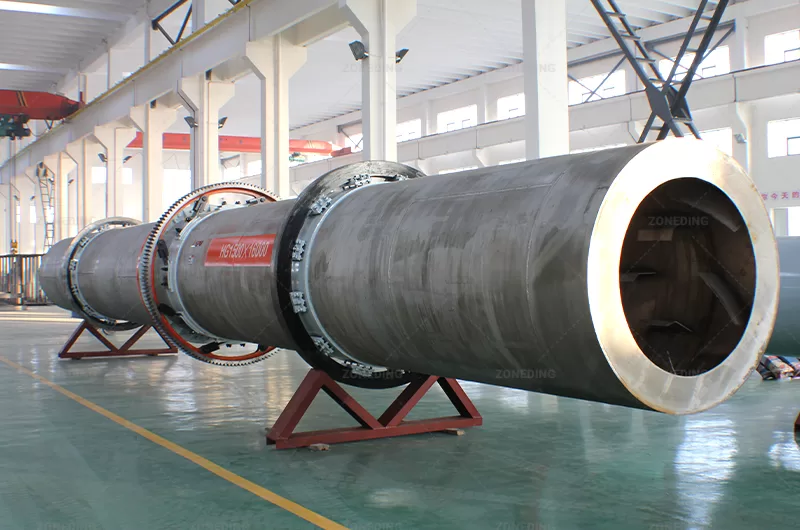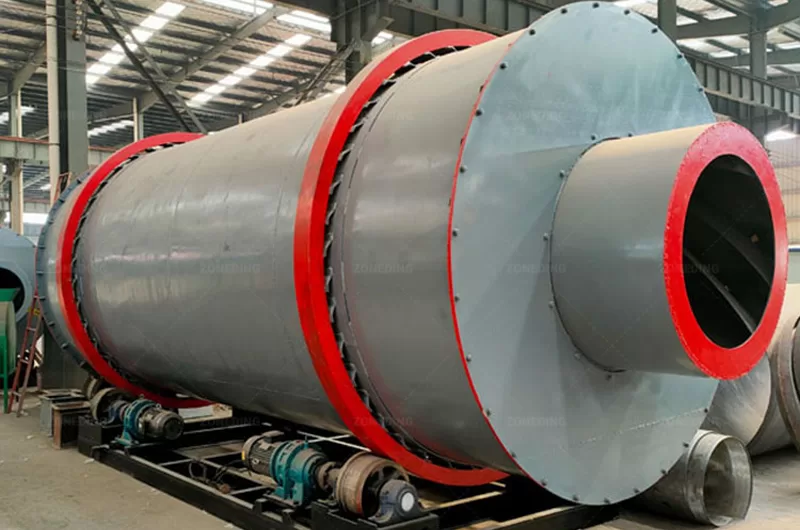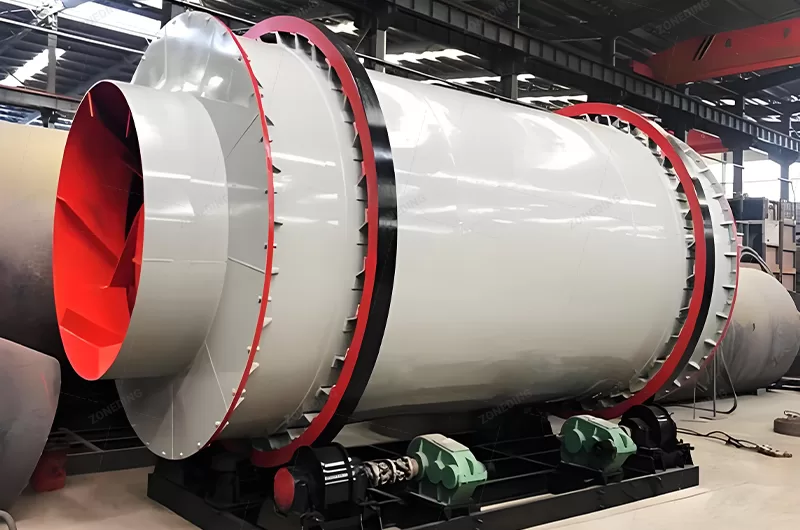全站搜索
Search the entire website
Search the entire website
As engineers at ZONEDING, we talk to clients every day about choosing the right industrial dryer. The conversation often comes down to one key question: which machine offers the best return on investment? This usually leads to a single drum dryer vs three drum dryer comparison. One is a simple workhorse. The other is a complex, high-efficiency machine. The brochures tell one story. Our 30 years of field experience tell another.
The best ROI does not come from the machine with the lowest fuel consumption on paper. It comes from the machine that runs reliably, day in and day out, with predictable maintenance costs. In this an industrial dryer comparison, I will give you the direct, honest facts. We will look past the marketing and focus on what really impacts your bottom line. We want to help you choose the right dryer for your project.
A single drum dryer is the most common type of rotary dryer in the industry. It is the workhorse. Think of it as a heavy-duty pickup truck. It is not fancy, but it is incredibly tough and reliable. The design is simple. It is one large, long rotating cylinder. Your wet material goes in one end. It travels in a straight line down the length of the drum. Hot gas flows through the drum. The material tumbles through the hot air. It comes out dry at the other end.


The beauty of the single drum dryer is its simplicity. The internal parts are easy to access. Maintenance is straightforward. It can handle almost any type of material you throw at it. It is built for tough jobs and long life. When you need a machine that just works, with minimal fuss, you choose a single-pass dryer. They have been the backbone of heavy industry for over a century for a very good reason.
A triple pass dryer is a more complex and specialized machine. If the single drum is a pickup truck, the triple-pass is a high-performance sports car. It is designed for maximum efficiency in a small package. The structure consists of three drums nested inside one another. Your material travels back and forth three times, covering three times the distance in a machine that is one-third the length. This design has some powerful three drum dryer advantages.


The main goal of this design is to achieve the highest possible thermal efficiency. The hot gas is used three times before it is exhausted. This means very little heat is wasted. The result is lower fuel consumption on paper. The other major benefit is the small dryer footprint. If your factory has very limited space, this compact design can seem like the perfect solution. However, this complexity comes with significant trade-offs in maintenance and operational reliability.
The choice between these two dryers comes down to understanding their fundamental differences. We will compare them directly across the factors that matter most to your operation and your ROI. This is not just about technical specs. It is about how the machine performs in the real world over many years.
This is the most critical difference.
Based on the materials they can handle, their ideal applications are very different.
Single-pass dryers are the standard for heavy industry. They are used in:
Triple-pass dryers have a much narrower niche. They work well only when:
The structural difference is simple vs. complex.
A single drum dryer is one large, open tube. You can literally walk inside a large one to inspect it. The flights that lift the material are welded directly to the inner shell and are easy to repair or replace.

A triple pass dryer is like a ship in a bottle. It has three nested drums with intricate internal supports and transfer chutes connecting them. Accessing the inner or middle drum for repairs is a major undertaking. It often requires dismantling a large part of the machine. This complex structure is also under immense thermal stress, as the inner drum is much hotter than the outer drum. This stress can lead to metal fatigue and cracked welds over time.
On paper, the three drum dryer wins on thermal efficiency. By making the hot gas travel a path three times as long, it extracts more heat before the gas is exhausted. A well-tuned triple-pass dryer can achieve extremely high efficiency. A rotary dryer efficiency calculation will confirm this.
However, “on paper” is not the real world. This high efficiency is very fragile. A small air leak in one of the many seals can destroy its efficiency. If cold air gets sucked into the system, your burner will work harder to compensate, wasting massive amounts of fuel. A simple, well-insulated single-pass dryer with modern seals and controls can be very efficient in practice. More importantly, its efficiency is stable and reliable. It is not easily compromised by minor wear and tear.
This is where the true cost difference appears. Operating a single drum dryer is straightforward. The controls are simple. When maintenance is needed, it is typically fast and uses standard tools and skills. Replacing a worn flight or a support roller is a routine job.
Maintaining a triple pass dryer is a specialized skill. A simple bearing failure can turn into a multi-day shutdown requiring external crane and rigging crews. Internal clogs require difficult and dangerous confined-space entry for manual cleanout. The industrial dryer operating cost is not just about fuel. It is about downtime. A week of lost production waiting for a specialized repair on a triple-pass dryer can wipe out years of potential fuel savings.
Surprisingly, the dryer initial cost may not be as different as you think. A complex triple pass dryer often has a higher purchase price due to its intricate construction. However, some manufacturers may offer them at a competitive price to win the business.
You must look beyond the initial price tag. The true cost is the total cost of ownership (TCO) over 15-20 years. This includes the initial price, installation, fuel costs, and, most importantly, maintenance and downtime costs. When you factor in the higher risk of long, expensive shutdowns, the simpler single drum dryer almost always has a lower total cost of ownership and therefore a better ROI.
A brand-new, perfectly tuned three drum dryer running a perfect material will have lower energy consumption per ton of product. This is its main selling point. However, its output is very sensitive to disruptions. A small clog can reduce its throughput dramatically. A long shutdown means zero output.
A single drum dryer might have slightly higher energy consumption per ton on paper. But its output is incredibly consistent. It runs and runs. Over the course of a year, the single drum dryer’s superior uptime and reliability often result in a higher total annual production than a triple-pass dryer of the same rated capacity. More product shipped per year is a huge factor in your overall ROI.
This is the one clear, undisputed advantage of the three drum dryer. Its dryer footprint is significantly smaller, typically about one-third the length of a single-pass dryer with the same drying capacity. If your project is a retrofit in an existing building or on a very small, expensive piece of land, this can be the a deciding factor in your decision of how to choose an industrial dryer. You must decide if this space saving is worth the trade-offs in maintenance complexity and operational risk.
To make the right choice, ask yourself these honest questions:
At ZONEDING, our philosophy is to build machines that provide the best long-term value for our customers. We are engineers first, not just salespeople. ZONEDING will always give you an honest assessment of your needs. We are experts in both single-pass and triple-pass technology. We have the capability to build a highly complex triple-pass dryer. But for over 90% of our clients, we recommend a heavy-duty, reliable single-pass dryer.
We believe the best ROI comes from reliability, uptime, and ease of maintenance. Our single-pass dryers are built like tanks. They are designed with extra-thick steel, simple and robust components, and easy access for maintenance. They are made to run for decades in the toughest industrial environments. We will partner with you to analyze your material and your operational costs. We will help you choose the machine that will make your plant the most profitable, not just for one year, but for the next 20 years.
Contact us today to speak with one of our experienced engineers for a no-obligation consultation.
The performance of your entire crushing plant hinges on one simple principle: consistent and controlled feeding. A primary crusher that is alternately for rock and then suddenly slug-fed with a massive, un-screened load is an inefficient one. Thi...
View detailsA modern, intelligently designed sand washing plant is the definitive solution for improving the value of your sand. Many perceive the sand washing process as simply rinsing sand with water, but this is a vast oversimplification. A truly effectiv...
View detailsAre you trying to decide between a crusher and a feeder breaker for your operation? You are not alone. This choice is fundamental to your site's productivity and profitability. The core difference is simple: crushers are designed to break hard, a...
View detailsSilver has captivated humanity for centuries. It is not just for jewelry or coins. Silver plays a crucial role in modern technology, from electronics to solar panels. As a leading manufacturer of mining equipment, ZONEDING understands that succes...
View details